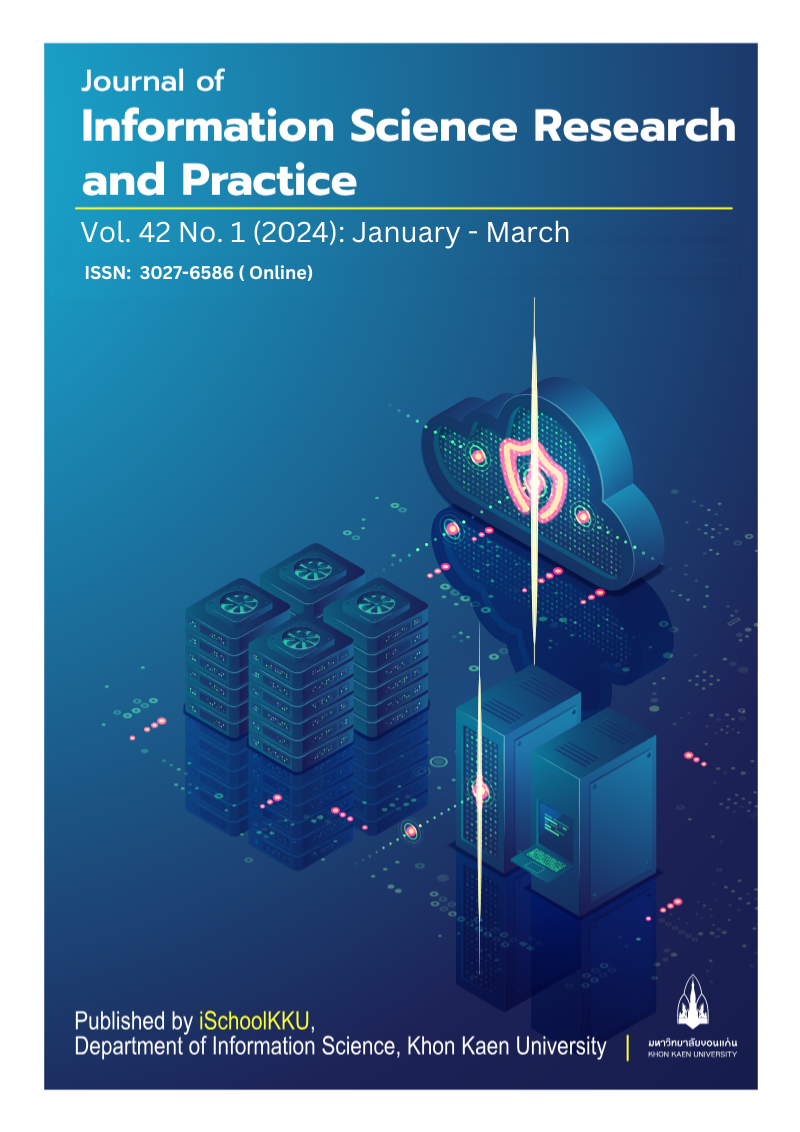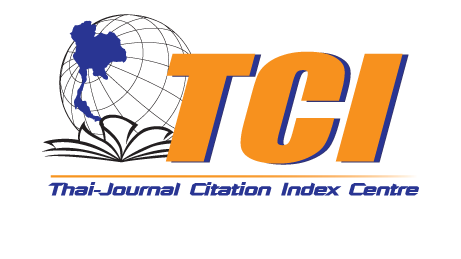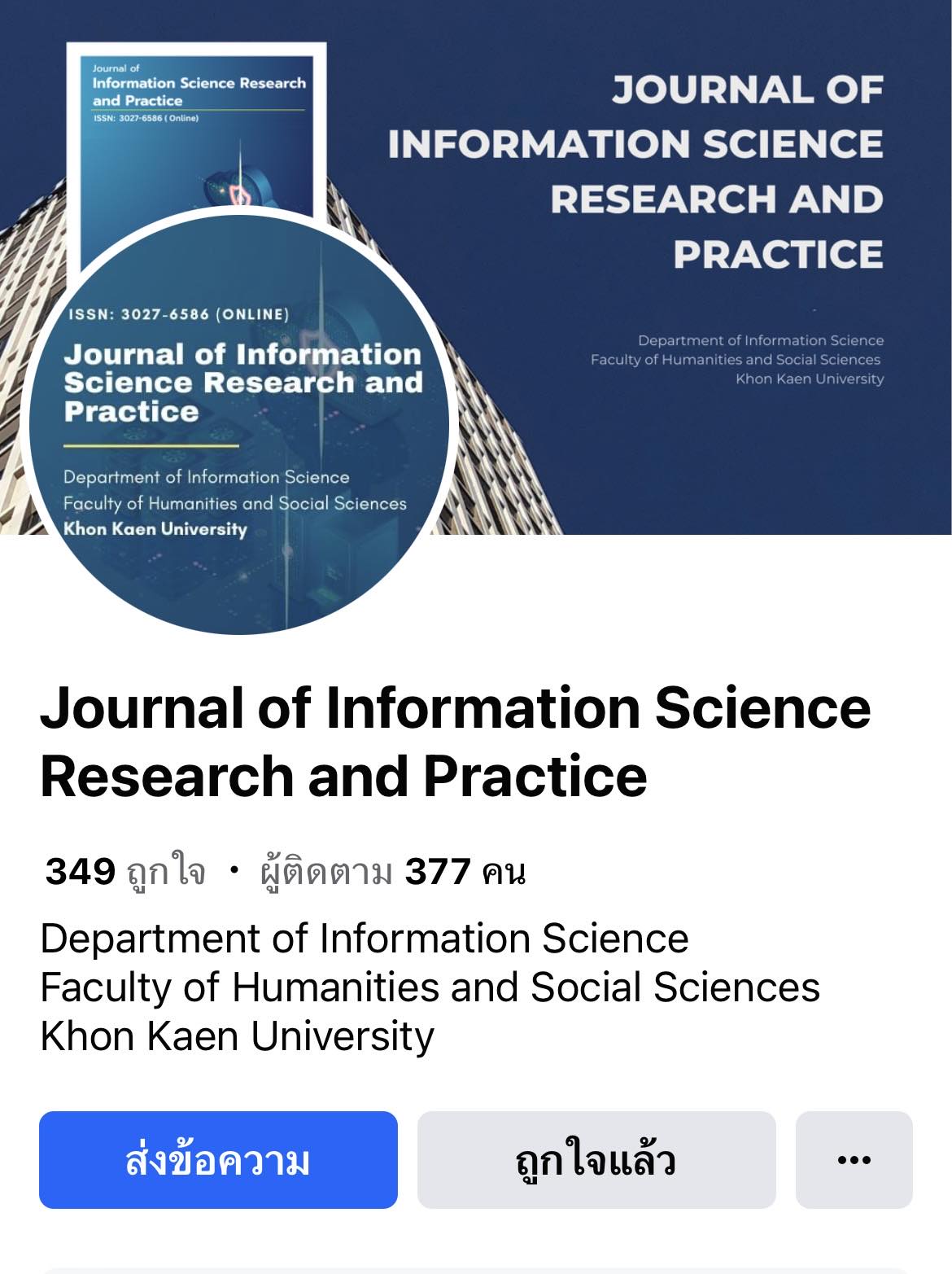An Analysis of Factors Affecting Numbers of Citations of Academic Officers at the Faculty of Environment and Resource Studies, Mahidol University Published in Scopus Database
DOI:
https://doi.org/10.14456/jiskku.2024.3Keywords:
Bibliometric Data, Scopus database, Number of citation, h-index, Journal metricAbstract
Purpose: This research aimed: 1) to find a pattern of academic works and bibliometric data; 2) to study the correlation between the number of citations and the quartile rank of journals; and 3) to analyze the factors of bibliometric data affecting the number of citations of lecturers and researchers of the Faculty of Environment and Resource Studies, Mahidol University, which were published in international journals from 2016 to 2020 with the total of 207 articles.
Methodology: In order to investigate the relationship of factors affecting number of citations, a statistical analysis was applied. One-Way ANOVA was used to compare differences. Multiple Linear Regression along with Stepwise Method were employed for the analysis to forecast the influences of variables affecting the number of citations.
Findings: It was discovered that a total of 207 academic articles were published across 128 journals, with 26.9% of these articles falling under the sub-discipline of Environmental Science. Regarding the analysis of the relationship between the number of citations and journal ranking metrics, a quartile value from the SJR database revealed a significant difference (p<0.05) in the average number of citations of Quartile 1 and Quartiles 2-4. This clearly showed that the selection of a Quartile 1 journal for publication increases the number of citations in comparison with other quartiles. In terms of factor analysis of bibliometric data, including six factors of academic articles, which affected the number of citations, there were two significant factors as follows: 1) the h-index of the corresponding author was statistically significant (p<0.001). In contrast, the h-index of the first author did not affect the number of citations with statistically significant (p<0.135); 2) International collaborations affected the number of citations with statistically significant (p<0.001).
Applications of this study: This investigation can be a guideline for researchers to consider the quality factors of journal articles so that the research can be developed and reach the quality standard of the journals. Also, the research articles will have a higher opportunity to be cited. Lastly, these findings demonstrate the need to strengthen research networks and collaborations, and support the building of international research teams. These efforts will lead to an increase in the number of citations.
Downloads
References
Agarwal, A., Durairajanayagam, D., Tatagari, S., Esteves, S., Harlev, A., Henkel, R., Gosalvez, J. (2016). Bibliometrics: tracking research impact by selecting the appropriate metrics. Asian Journal of Andrology, 18(2), 296. https://doi.org/10.4103/1008-682x.171582
Annalingam, A., Damayanthi, H., Jayawardena, R., & Ranasinghe, P. (2014). Determinants of the citation rate of medical research publications from a developing country. SpringerPlus, 3(1). https://doi.org/10.1186/2193-1801-3-140
Apinya, I. (2019). Guidelines for searching and interpreting environmental sciences journal metrics data at national and international levels. (In Thai). KMUTT Research and Development Journal, 42(1), 3-22.
Banterngchit, D. (2009). Bibliometrics: khruangmu kansuksa wichai nai sakha wicha bannaraksasat lae sarasonthet sattra [Bibliometrics: Research tools in the field of Library Science and Information Science]. (In Thai). Bangkok: Department of science service.
Bornmann, L., Schier, H., Marx, W., & Daniel, H.-D. (2012). What factors determine citation counts of publications in chemistry besides their quality? Journal of Informetrics, 6(1), 11–18. https://doi.org/10.1016/j.joi.2011.08.004
Callaham, M. (2002). Journal Prestige, Publication Bias, and Other Characteristics Associated With Citation of Published Studies in Peer-Reviewed Journals. JAMA, 287(21), 2847. https://doi.org/10.1001/jama.287.21.2847
Chanaboon, S. (2017). Bot thi hok kan wikhro khomun chœng anuman sathiti læ kan wikhro khomun nai nganwichai buangton [Chapter 6: Data Analysis by Inferential Statistics, Statistics and data analysis in preliminary research]. (In Thai). Khon Kaen: Khonkaen Provincial Health Office.
Dangrat, K. (2019). Ngan wikhro : kan wikhro khwamsamphan rawang kan ang thung kap kanchat khunnaphap warasan [Analysis: Analysis of the relationship between number of citation and quartile]. (In Thai). Khon Kaen: Research and Graduate Studies (RGS), Khon Kaen University.
Didegah, F., & Thelwall, M. (2013). Determinants of research citation impact in nanoscience and nanotechnology. Journal of the American Society for Information Science and Technology, 64(5), 1055–1064. https://doi.org/10.1002/asi.22806
Faculty of Environment and Resource Studies, Mahidol University. (2021). Phaen yutthasat khana singwaetlom lae sapphayakon sat Mahawitthayalai Mahidon Pho So. 2020-2024 [Strategic plan of the Faculty of Environment and Resource Studies, Mahidol University 2020-2024]. (In Thai). Retrieved from https://en.mahidol.ac.th/th/policy/document.
Ketefian, S., & Freda, M. C. (2009). Impact factors and citations counts: A state of disquiet. International Journal of Nursing Studies, 46(6), 751–752. https://doi.org/10.1016/j.ijnurstu.2008.08.009
Research Management and Development Division, Mahidol University. (2021). World Class University: Mahidol University Research Strategy. (In Thai).
Rittaphon, P., Pathom-aree, W., & Phuangsombat, N. (2016). A Comparative Study of High-quality Academic Journals in Thailand and ASEAN: Lessons for the Chiang Mai University Journal of Natural Sciences. Chiang Mai: Office of the Chiang Mai University.
Scopus. (2021). Scopus: Access and use Support Center. Retrieved from https://service-elsevier-com.ejournal.mahidol.ac.th/app/answers/detail/a_id/14194/supporthub/scopus/#citescoreRank.
Srisawad, S. (2017). Factors influencing citation counts in Thai Nursing Research articles published on Scopus Database: Using zero-inflate negative binomial regression. Journal of Information Science, 35(3), 1-23.
Srisawad, S. (2019). The association of research collaboration and bibliometrics data with citation impact among articles based on Scopus Q1 from Nursing Institutions in Thailand. Princess of Naradhiwas University Journal of Humanities and Social Sciences, 6(1), 154-170.
The Times Higher Education World University Rankings. (2021). About THE's rankings. Retrieved from https://www.timeshighereducation.com/world-university-rankings/about-the-times-higher-education-world-university-rankings
Wang, L., Thijs, B., & Glänzel, W. (2015). Characteristics of international collaboration in sport sciences publications and its influence on citation impact. Scientometrics, 105(2), 843–862. https://doi.org/10.1007/s11192-015-1735-y
Yu, T., Yu, G., Li, P.-Y., & Wang, L. (2014). Citation impact prediction for scientific papers using stepwise regression analysis. Scientometrics, 101(2), 1233–1252. https://doi.org/10.1007/s11192-014-1279-6








